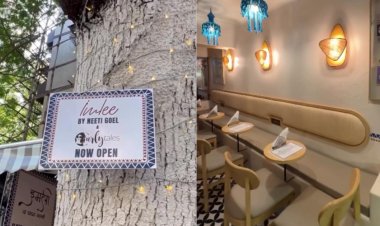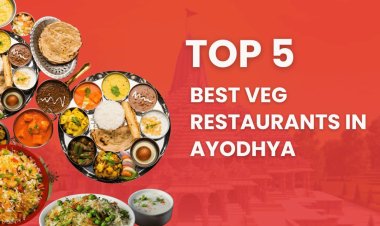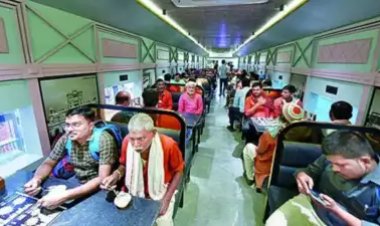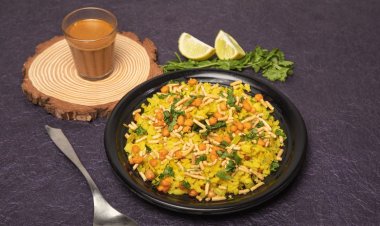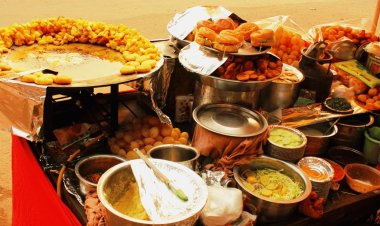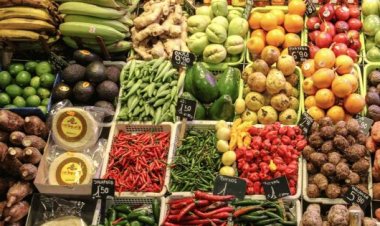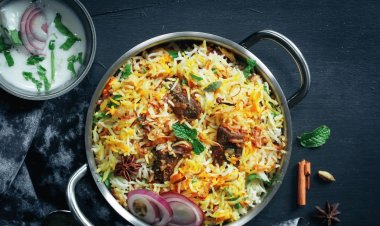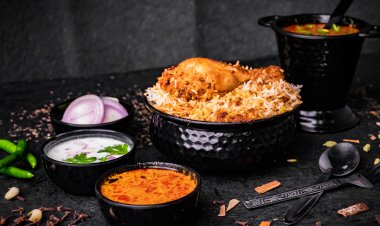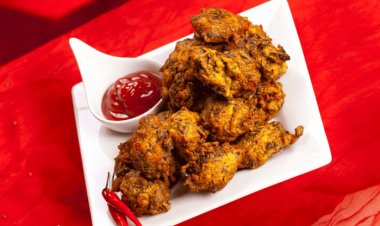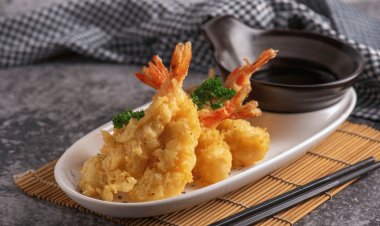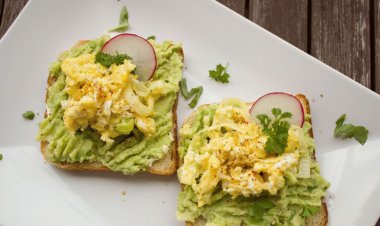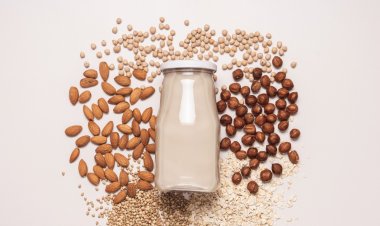The Importance of Food Photography for HoReCa: Insights from Renowned Food Photographer, Abhishek Vats
Check why food photography is crucial for the HoReCa industry (Hotel, Restaurant, and Cafe) in this insightful conversation with acclaimed food photographer, Abhishek Vats. Gain valuable insights into the significance of visually enticing food images and their impact on customer engagement and brand promotion.

You've probably heard the saying, "People eat with their eyes first." In today's digital world, food photography has become incredibly important in the food and beverage industry. While the taste of food is crucial, how it looks and is presented plays a big role in attracting customers and making their dining experience memorable.
Food photographer Abhishek Vats explains why food photography matters in the hospitality industry, particularly in branding, marketing, online presence, and customer engagement.
Eye-Catching Visuals: High-quality food photos capture the beauty of a dish, showing off its colors, textures, and presentation. These appealing images make people crave the food and inspire them to order it. When we see a juicy burger on a billboard or enticing menu pictures, it makes us want to visit the restaurant and enjoy the meal.
Building a Brand and Marketing: Social media is a powerful tool for marketing nowadays. Beautiful food images are the first way customers engage with a brand, conveying its quality and reputation. Sharing photos and videos of delicious meals increases brand visibility, reaching a larger audience and attracting more customers.
Online Food Delivery: With the rise of online food delivery, good food photos have become even more crucial. Customers rely on enticing visuals to decide where to order from. Brands that showcase appealing images of their menu items on online delivery platforms have a competitive advantage. Delivery apps also prefer and promote brands with mouth-watering images in their marketing campaigns.
Social Media Presence: Social media platforms are influential for promoting restaurants and showcasing culinary experiences. Food photography plays a vital role in creating an attractive online presence. Sharing appetizing food photos on Instagram, Facebook, and Yelp boosts exposure and engagement. Customers often look for visually appealing food images when choosing a place to eat, and captivating photos can sway them toward a specific restaurant.

During an interview with Indian Food Times, food photographer Abhishek Vats emphasized the importance of food photography in today's highly competitive hospitality industry. Vats said, "In the modern hospitality world, where new brands emerge daily, a strong marketing strategy is essential. Good quality food images help brands showcase their offerings. A dish like Daal Makhni may taste the same everywhere, but a well-lit, well-presented image with melted butter and your favorite garlic naan on the side makes all the difference."
While taste remains the most important factor, food photography adds to the dining experience by attracting customers, promoting brands, establishing a solid online presence, contributing to branding efforts, and inspiring culinary exploration. It's a valuable tool that allows businesses to visually communicate their food offerings and engage with customers in a captivating way.
By understanding the significance of food photography, brands can use it to their advantage by attracting customers, standing out from the competition, and leaving a lasting impression. The expertise of food photographer Abhishek Vats demonstrates the pivotal role that food photography plays in the dynamic world of the hospitality industry.
Food Photography Statistics: The Impact of Visual Culture on Food
Visual marketing is on the rise and has become a dominant force. As far back as 2018, a remarkable 84% of communication relied heavily on visuals. Adding images to your content can have a significant impact, leading to a staggering 94% increase in views compared to content without visuals.
This explains why an astonishing 82% of people are swayed to order a dish solely based on its appearance in a picture, even if they didn't have a specific craving for it initially. Furthermore, restaurants that made the transition from text-based menus to photo-based menus for online ordering witnessed an impressive 25% increase in conversion rates.
Why Food Photography is Essential for Cloud Kitchens?
Cloud kitchens, also referred to as virtual kitchens, ghost kitchens, or dark kitchens, are food establishments that exclusively focus on fulfilling delivery or takeaway orders. They differ from traditional restaurants by lacking a physical storefront or space for customers to dine in. As a result, showcasing their brand becomes primarily dependent on food photography, along with the option to provide attractive packaging for delivery.
FAQs:
Why is food photography important for restaurants and food establishments?
Food photography is crucial for restaurants and food establishments because it helps attract customers by showcasing the visual appeal and presentation of their dishes. It creates a desire for the food, sets expectations, and serves as a marketing tool to differentiate the brand from competitors.
How does food photography contribute to branding efforts?
Food photography plays a significant role in branding efforts by creating a consistent visual identity for the establishment. Well-captured and styled food images help establish a unique brand image, evoke a specific ambiance or style, and make the brand more memorable to customers.
Can food photography impact online orders and food delivery services?
Yes, food photography has a direct impact on online orders and food delivery services. Customers rely heavily on visuals when deciding where to order food from. Appealing food photos on online delivery platforms can attract customers and increase their likelihood of choosing a particular restaurant or dish.
What role does social media play in food photography?
Social media platforms have become influential channels for promoting restaurants and culinary experiences. Food photography is essential for creating an appealing online presence and engaging with customers. Sharing captivating food photos on platforms like Instagram and Facebook helps generate exposure, attract potential customers, and create a positive impression of the brand.
Do I need professional equipment to take good food photos?
While professional equipment can enhance the quality of food photos, it is not always necessary to have expensive gear. With good lighting, attention to composition, styling, and editing techniques, you can achieve impressive results even with a smartphone or basic camera. Practice and creativity are key to capturing enticing food images.
What are some tips for beginners in food photography?
- Experiment with lighting: Natural light or well-controlled artificial lighting can significantly enhance food photos.
- Pay attention to composition: Arrange the elements in the frame thoughtfully, considering the placement of the dish, props, and background.
- Focus on details: Pay attention to small details like plating, garnishing, and cleanliness.
- Use props wisely: Select props that complement the dish and create an appealing visual narrative.
- Edit with care: Post-processing can enhance the final image, but avoid excessive editing to maintain a natural and realistic appearance.
Food photography is a creative and dynamic field, so continuous practice and experimentation will help beginners improve their skills over time.
Remember, food photography is not just about making the food look appetizing; it is about creating a visual experience that entices customers and adds value to the overall dining experience.
What's Your Reaction?
 Like
0
Like
0
 Dislike
0
Dislike
0
 Love
0
Love
0
 Funny
0
Funny
0
 Angry
0
Angry
0
 Sad
0
Sad
0
 Wow
0
Wow
0


























